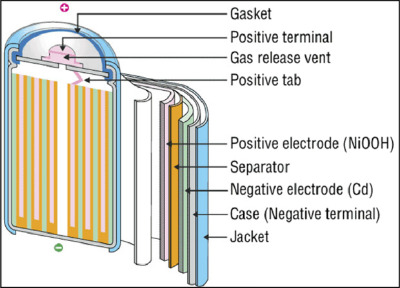- Compound used in tofu could help make solar cheaper
- By Michael Casey JUNE 25, 2014
- Solar power has long been dogged by costs that have made it difficult for the renewable to compete with traditional fossil fuels.
- Two new studies offer signs that this could be changing quickly. One offers a new way to produce solar cells more cheaply and safely than current methods. The other indicates that concentrating solar power, which uses the sun’s energy to heat up a liquid that drives a turbine, could supply “a substantial amount of current energy demand.”
- In a study released Wednesday in journal Nature, University of Liverpool’s Jon Major and several other researchers announced that they had found that magnesium chloride, which is used in making tofu, bath salts and applied to roads in the winter could replace cadmium chloride in the making of second-generation, thin-film solar cells.
- There is strong demand for the improvement of the mechanical properties (particularly the strength) of magnesium (Mg) alloys to meet the growing industrial applications of structural materials.
- Speaking in a teleconference from Copenhagen, Major said magnesium chloride, which is extracted from seawater, would cost $0.001 per gram compared to $0.3 for cadmium chloride. It would also eliminate the challenges and expense of handling cadmium chloride, a highly toxic compound that requires elaborate safety measures to protect workers during its manufacture and a special disposal process when panels are no longer needed.
- “So what we have done without any loss of efficiency is to replace expensive and highly toxic material with one that is completely benign and much lower cost in the process,” Major said. “This offers a great cost benefit for production of these kinds of solar cells and could help make a step change in the production of them.”
- The solar market is currently dominated by panels made with silicon. In a bid to make solar more competitive, there is growing interest from companies like First Solar in developing solar cells using cadmium telluride, which is more efficient and more flexible so it could be applied many more surfaces including windows.
- To make these cadmium telluride cells, a thin layer of cadmium chloride is applied to the solar cell, and then heated up in a furnace. This is considered the activation process, Major said, helping boost a cell’s efficiency from around 1 percent to as much as 20 percent.

- In a bid to find a safer alternative, Major and his team first looked at sodium chloride, but found the efficiency was about half of cadmium chloride. Another option was difluorochloromethane but that has been linked to ozone depletion and its use has been restricted by international agreements.
- They then turned to magnesium chloride and found that it was just as efficient was comparable and could be applied without any expensive safety equipment.
- Major said magnesium chloride isn’t being used at the moment, but was hopeful it “would be taken up by research and hopefully by industry once this work is publicized.”
- Steve Krum, the director of corporate communications for First Solar, would only say cadmium chloride remains “critical part” of its production process and that it was not a “major cost driver in our manufacturing process.”
 The researchers from the Austria-based International Institute for Applied Systems Analysis simulated the construction and operation of CSP systems in four regions around the world taking into account weather, electricity demand and costs. They found that CSP in the Mediterranean region, for example, could provide 70-80% of current electricity demand, at no extra cost compared to gas-fired power plants.
The researchers from the Austria-based International Institute for Applied Systems Analysis simulated the construction and operation of CSP systems in four regions around the world taking into account weather, electricity demand and costs. They found that CSP in the Mediterranean region, for example, could provide 70-80% of current electricity demand, at no extra cost compared to gas-fired power plants.- “In order to address climate change we need to greatly expand our use of renewable energy systems,” said IIASA researcher Fabian Wagner, who also worked on the study. “The key question, though, is how much energy renewable systems can actually deliver.”
- A huge challenge with deploying solar energy on a large scale is that the sun doesn’t shine all the time. That means that energy must be stored in some way. For photovoltaic (PV) cells, which convert sunlight directly to electricity, this is especially difficult to overcome, because electricity is difficult to store.
-
About us
Contact us
Make a suggestion
- Metalpedia is a non-profit website, aiming to broaden metal knowledge and provide extensive reference database to users. It provides users reliable information and knowledge to the greatest extent. If there is any copyright violation, please notify us through our contact details to delete such infringement content promptly.

 The researchers from the Austria-based International Institute for Applied Systems Analysis simulated the construction and operation of CSP systems in four regions around the world taking into account weather, electricity demand and costs. They found that CSP in the Mediterranean region, for example, could provide 70-80% of current electricity demand, at no extra cost compared to gas-fired power plants.
The researchers from the Austria-based International Institute for Applied Systems Analysis simulated the construction and operation of CSP systems in four regions around the world taking into account weather, electricity demand and costs. They found that CSP in the Mediterranean region, for example, could provide 70-80% of current electricity demand, at no extra cost compared to gas-fired power plants.